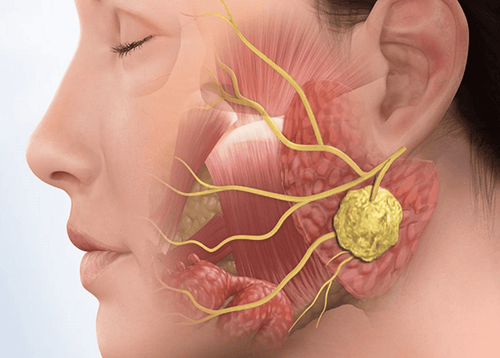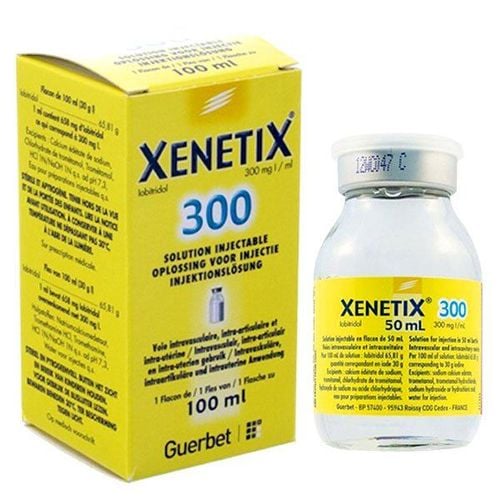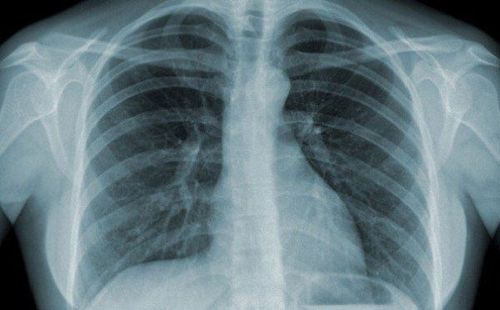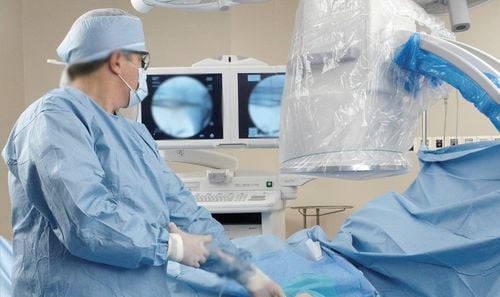This is an automatically translated article.
The article is professionally consulted by - Master, Resident, Specialist I Trinh Le Hong Minh - Department of Diagnostic Imaging - Vinmec Central Park International General Hospital.
Computed tomography simulation is a very important step in radiation therapy for patients with head and neck cancer. Computerized tomography simulates radiation therapy to help doctors plan the most optimal treatment for the patient.
1. What is computed tomography simulating radiation therapy for head and neck cancer?
Radiation therapy is a method of using high-energy particles or waves such as gamma rays, X-rays, protons, electron beams, ... to destroy cancer cells. The beam of radiation from the machine will be beamed through the body. Each irradiation usually lasts about 15 minutes, patients usually irradiate 5 times per week and lasts from 3-9 weeks. Radiation therapy is one of the most common cancer treatments available today that can be used alone or in combination with other cancer treatments. In particular, radiation therapy is the basic treatment method in head and neck cancer, including many different types of cancer such as nasopharyngeal cancer, oral cavity cancer, hypopharyngeal cancer, laryngeal cancer, and salivary gland cancer. , sinus cancer,...

Xạ trị đem lại hiệu quả cao trong điều trị ung thư vòm họng
To accurately plan, dose, and administer radiation therapy to a patient, computed tomography simulation is a very important step. The radiotherapy simulation image helps to calculate and simulate the radiation dose distribution on the tumor and surrounding healthy tissues according to the beam energy, direction of projection, way of projection,... in order to adjust these parameters. in the best possible way for the patient. In computed tomography that simulates radiation therapy, the patient is scanned the part of the body that will receive radiation therapy. The patient lies on a flat surface, using fixed devices such as a pillow (head rest), a thermoplastic mask and a laser positioning system, simulates such that in a position identical to the one that will proceed. radiation therapy. The immobilizer plays an important role, helping to ensure that the patient's position will be duplicated during the entire radiation therapy process later. The heat mask is designed to fit the face, in addition to keeping the head fixed, it also helps to protect the patient's face.
2. How does the simulated computed tomography scan for patients receiving radiation therapy for head and neck cancer take place?
Computerized tomography simulation for patients receiving radiation therapy for head and neck cancer is usually conducted according to the following steps:
Patient is checked by medical staff with personal information, simulated posture, types tools for immobilization and the mask making and radiotherapy simulation procedures are explained . The patient is placed in a line to inject contrast when prescribed by the doctor. Medical staff in the radiotherapy simulation room will help put the patient on the CT table, use a fixed pillow, and adjust the patient's position to suit the positioning laser system; Instruct the patient to close their eyes to avoid the impact of the laser on vision. Make a heat mask for the patient: the mask is soaked with hot water to soften, so it feels wet and hot when applied to the face. For the mask to be accurate, the patient needs to lie still and follow the instructions of the medical staff such as lifting the chin, tilting the neck, biting the tongue depressor, ... After about 15 minutes, the mask cools, the medical staff Using lead tape, mark the initial center on the mask. This initial focus will be used to plan treatment later. The patient's name is written on the mask to avoid confusion with other patients. Computed tomography simulation of the head and neck: pillows and heat masks are used for immobilization. If contrast is injected, the patient will feel a burning sensation throughout the body. The patient should lie still during the scan.

Hình ảnh máy chụp cắt lớp vi tính mô phỏng
The medical staff examines the patient's simulated computed tomography scan and lead points, then transfers the images to the treatment planning system. After taking the picture, the medical staff removed the fixed mask and brought the patient down. Checking and monitoring the patient's health for 30 minutes. Inform the patient if there are unusual symptoms such as fatigue, shortness of breath, rash,... they should immediately notify the medical staff. If the patient is stable, he will be discharged from the hospital and told to re-examine according to the doctor's schedule. After 1-2 weeks from the computed tomography simulation, the patient will begin radiation therapy.
3. Note to the patient before the CT scan simulation radiotherapy
Patients, especially female patients, should cut their hair short so that the CT scan simulating radiation therapy in the head and neck area is convenient. If contrast is injected, the patient should fast for at least 4 hours before the scan. Patients need to inform the medical staff of the imaging room if they are pregnant or suspect that they are pregnant. In addition, the patient also needs to notify the medical staff if there is a history of allergy to contrast, a chronic disease such as kidney failure, diabetes,...
Computed tomography simulation for the patient Radiation therapy for head and neck cancer is a modern and advanced imaging technique that helps doctors assess the condition of the disease to guide examination and treatment.
In order to meet the needs of medical examination and treatment, currently Vinmec International General Hospital has been and continues to bring in a system of modern machines such as magnetic resonance imaging (MRI), computed tomography (CT), X-ray, etc. ... in the work of medical examination and treatment, diagnostic imaging, disease treatment. Especially in order to bring high efficiency in medical examination and treatment, Vinmec now also designs many accompanying medical services, bringing many conveniences to customers.
Before taking a job at Vinmec Central Park International General Hospital, the position of Doctor of Radiology since February 2018, Doctor Trinh Le Hong Minh used to work as a resident in the Department of Radiology. at hospitals: Cho Ray, University of Medicine and Pharmacy, Oncology, People's Gia Dinh, Trung Vuong... from 2012-2015. Officially working at Cho Ray Hospital from 2015-2016, City International Hospital since 2016.
For advice and answers on computed tomography methods, please contact International General Hospital Vinmec here.














